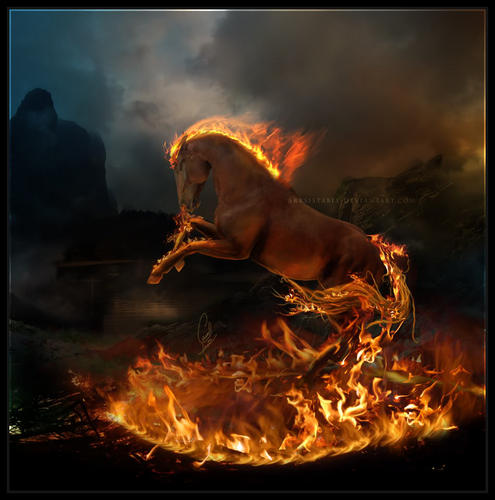4.1.1.19.2 The poetry collection “Corcel de fuego”, published in 1948 by Félix Pita Rodríguez

The poetic text “Corcel de fuego” (Fire Corcel) brings together pieces published by Félix Pita Rodríguez between 1935 and 1940 and constitutes his only book from the Republican era, a synthesis of his previous discoveries, which here reach the stature to figure in our lyrical history by enriching its traditional fields of meaning.
The book is made up of four sections that respond to identifiable topics, with the titles of “Corcel de fuego” (from which the collection of poems takes its name), “Fuente callada”, “Ballads and nocturnes”, and “Landas infinitos”, which have as their central point an assimilation of the core of surrealism but not so much of its creative procedures, the tension of the matter of language to squeeze out all its expressive potential and the implicit discontent with reality.
The first section refers to a dreamlike universe extracted in part from the surrounding but with hesitation regarding the boundaries of the real and the unreal, in which the poet is not the solipsist but his antithesis, insofar as he feels determined by a being more powerful than his soul, not a divine entity but perhaps the society that imposes norms that are profoundly alien to him, or derived from an order that is unjust and bordering on the absurd, a lucidity that torments the poet and from which he tries to escape.
The second section is the least mediated in the transference of the author’s grieving subjectivity, where lucidity best reaches readers in terms of the transparency of language and sometimes its nullity with respect to the profound psychic content. This section includes one of this author’s most anthologized poems in the panoramas of Cuban poetry—”No sé si con palabras”—without thereby establishing himself as representative but rather sui generis, a poet of those who extend the boundaries of the lyrical universe that welcomes him:
“(…)
Where does this fatigue come from? Why are we so prisoners?
Nobody knows who, those who cannot be called,
even, barely, almost, memories of memories?
This world that I have so new in my hands,
It comes from the nebulous depths of time. Yesterday you were.
And you were also tomorrow. I don’t know how to explain it.
Maybe I can tell you just tonight
that the juice of other nights is their same silence,
that five deaths before your hand dug into my chest,
that five deaths before you told me moaning
what you moan now, repeating, moaning.
Maybe I can just tell you tonight
in which icy, strange, warm, well-loved,
a tired air swirls around my neck,
Maybe I can just tell you, I don’t know with what words,
I don’t know how, without being able to explain it,
that you are the same, that you are,
I don’t know, but I remember.”
In the third section, associations predominate, leading to an atmosphere of unreality in which certain neo-romantic tones still linger. The fabled bursts into the poem as a way of recreating the poet’s anxieties, derived from the oppression of alienating social realities. Irony and absurdity erupt with greater force from the depths of alienation.
The final section expresses a poetic movement filled with agony in the face of the inescapability of death, the culmination of the poet’s alienation and ultimate impossibility of influencing his circumstances. The text, in general, is the fruit of a compressed sensibility that finds its outlet in lyricism as a way of sublimating underlying conflicts, where the social meaning is not deliberate, but something of collective suffering is evident, also in terms of the aesthetic representation of the internal and external atmosphere that loomed over the poet.








